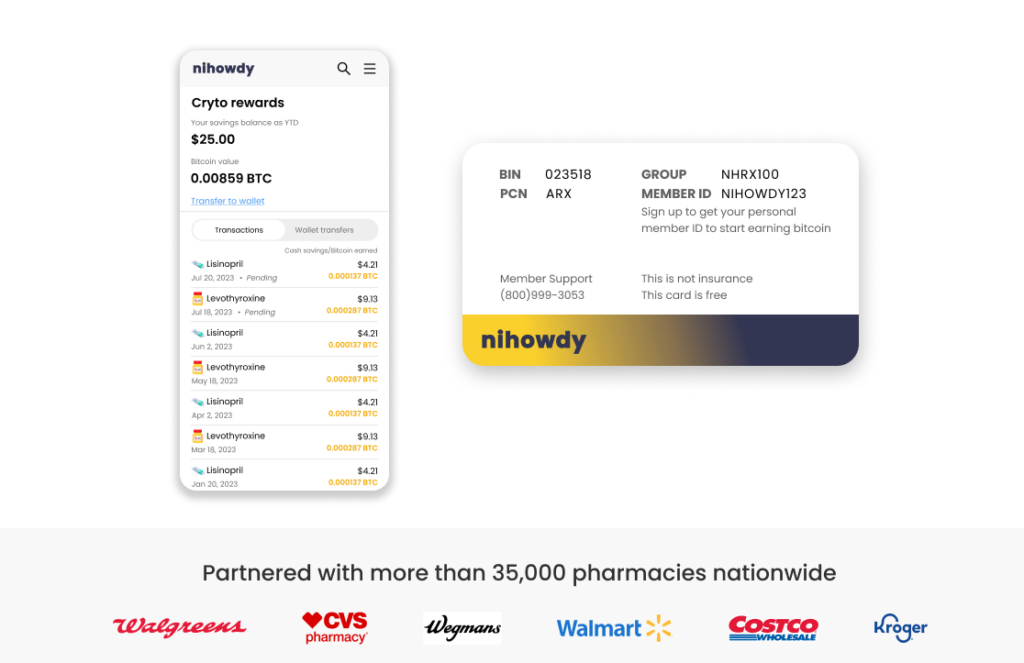Optimal Sites: Where to Inject Semaglutide for Effective Results

Where to properly inject semaglutide is crucial for its effectiveness; typically, this medication is administered subcutaneously in the abdomen, thigh, or upper arm. In this guide, we’ll cover how to select the right injection site for you, ensuring comfort and optimal drug absorption.
Key Takeaways
Semaglutide injections effectively manage type 2 diabetes, aid in weight loss, and enhance cardiovascular health by mimicking the GLP-1 hormone’s effects.
Proper injection techniques, optimal injection site selection (usually the abdomen), and correct storage of semaglutide are essential for the efficacy and safety of the treatment.
Rotating injection sites is crucial for minimizing skin reactions and scar tissue formation, and managing missed doses and side effects is important for maintaining treatment efficacy.
Understanding Semaglutide: Purpose and Benefits

The introduction of semaglutide injections has revolutionized healthcare by providing a multifaceted solution for those dealing with type 2 diabetes, struggling with weight management, and seeking to enhance heart health. By replicating the activity of the GLP-1 hormone, this injection modulates blood sugar levels while simultaneously diminishing hunger and decelerating gastric emptying. The ability to inject semaglutide offers significant benefits and has markedly improved the well-being of numerous patients grappling with these medical concerns.
In our detailed exploration, we will delve into how exactly semaglutide tackles each of these issues effectively.
Type 2 Diabetes Treatment
Semaglutide stands out as a potent option for managing type 2 diabetes due to its ability to:
Enhance the production of insulin
Inhibit glucagon secretion
Steadily regulate blood sugar levels
Decelerate the process of gastric emptying, which assists in controlling blood glucose.
Used either as monotherapy or alongside other diabetes medications, semaglutide has shown remarkable efficacy in reducing fasting blood glucose by 22%, post-meal glucose spikes by 36%, and overall average daily blood sugar levels by also around 22%. This makes it an invaluable tool for those grappling with this chronic disease, providing a beacon of hope for better health management.
Weight Loss and Management
Semaglutide has not only proved to be highly effective for controlling diabetes, but it also serves as a reliable companion on the path of weight loss. It achieves this by replicating the functions of the GLP-1 hormone, which helps regulate hunger and induces satiety, thus supporting efforts in both diet and exercise managing one’s weight. The Wegovy version of semaglutide is officially sanctioned for helping adults who are overweight or suffer from obesity lose weight.
As such, semaglutide offers considerable benefits for those aiming to maintain their blood sugar within healthy parameters while simultaneously endeavoring towards successful weight management.
Cardiovascular Health
Semaglutide extends its advantages beyond the realms of diabetes care and weight control. This remarkable medication also enhances cardiac health notably. For those suffering from type 2 diabetes coupled with heart conditions, semaglutide may diminish the likelihood of cardiovascular incidents like myocardial infarctions and cerebral strokes. There is potential evidence that this drug can ameliorate cardiovascular results of heart disease among these individuals.
Thus, it goes. Than just controlling blood sugar levels and managing blood sugar control your weight. Semaglutide’s role in regulating blood sugar contributes to an overall improvement in health and well-being, simultaneously assisting with weight loss efforts as well.
Key Considerations for Semaglutide Injections

Prior to commencing treatment with semaglutide medications, it’s imperative to evaluate several important aspects. These encompass potential allergies, your age bracket, pregnancy status, any possible drug interactions you may face based on medications you’re taking or planning to take as well as an in-depth look at your family medical history. Learning the correct method for choosing and using an injection site is vital. Along with this comes the need for knowledge regarding the storage of your medication. By dedicating effort to grasp these elements fully before beginning therapy can enhance both ease and efficacy associated with use of semaglutide.
In what follows, we shall delve into a detailed discussion about each one of these crucial points.
Injection Site Selection
It’s important to choose the best injection site for maximizing the efficacy of semaglutide injections. This medication can be administered subcutaneously into the abdomen, thigh or upper arm’s posterior aspect. The stomach is favored for its expansive area which facilitates effective absorption of the drug, yet individuals seeking more privacy might opt for injecting in less visible areas like the back of their upper arm.
One should steer clear of using the inner thigh as an injection spot and avoid sections with scars or stretch marks to minimize potential skin issues. Proper selection of an injection location is a crucial preliminary action in administering medication effectively.
Proper Technique
After choosing the appropriate injection site, it is critical to adopt the right technique for administering semaglutide. To administer subcutaneous injections effectively and reduce any potential discomfort, proper needle insertion at the subcutaneous injection site is essential. Before injecting, it’s important to sterilize the area with alcohol and allow it to dry completely while also avoiding any spots that are sore or bruised.
Employing a correct injection method not only improves the efficacy of semaglutide as a medication, but also lessens chances of adverse effects from occurring.
Storage and Expiration
It is essential to store your semaglutide injections correctly to preserve their effectiveness. Adhere to the following instructions:
Keep the injections refrigerated between uses.
Prior to administration, inspect the solution by holding it up against a light to confirm that it’s clear and without color.
Should you notice any irregularities like changes in color or visible particles within the solution, reach out immediately for guidance from a healthcare professional before using the medication.
Ensuring that you properly store and routinely examine your medication will help guarantee its safety and efficacy for use.
Rotating and Avoiding Complications

It’s essential not only to master the appropriate technique and choose the correct site for semaglutide injections, but also to ensure you’re varying those injection sites. By changing up your injection location between places like your upper arm, abdomen, or front of the thigh, you can minimize potential skin irritation and the build-up of scar tissue.
In this discussion, we’ll delve into why it’s crucial to rotate injection sites where you administer these injections and how doing so can prevent problems from arising. We will explore effective methods for rotating injection sites correctly in order to safeguard against such complications.
The Importance of Rotation
It is crucial to regularly switch the location of injection sites in order to reduce skin-related issues like swelling, redness, and discomfort. This practice also guards against the accumulation of scar tissue that can negatively affect how well medication is absorbed. For optimal administration of semaglutide, alternate between different areas such as the thigh, stomach, and back of the arm instead of repeatedly using the same spot for injections.
Maintain a routine in your approach while ensuring you introduce variation by rotating injection sites consistently.
Preventing Skin Irritation
It is essential to mitigate skin irritation for a pleasant experience with semaglutide. Patients must be alert to the indications of reactions at the injection site, which include redness, swelling, and discomfort. Persistent symptoms necessitate prompt consultation with healthcare professionals.
Remaining observant and taking initiative will promote a more seamless journey through treatment.
Recognizing and Managing Complications
Understanding and addressing possible issues that may arise from administering semaglutide injections is essential for both your well-being and the drug’s efficacy. To minimize the chances of muscle enlargement, it’s important to select an appropriate injection site and routinely change the location. It is also advisable to avoid injecting into areas showing signs of redness, bruises, or sensitivity in order to prevent skin irritation.
If you suspect an infection at the injection site, watch out for indications including:
Reddish discoloration
Puffiness
Discomfort
Heat at touch
Leakage of fluid
Should any such symptoms manifest, it is critical to handle them properly. Above all else remember that prioritizing your health and safety should always come first when dealing with medications like this.
Semaglutide Dosage and Frequency

It is essential to comprehend the recommended dosage and administration frequency for semaglutide injections to effectively control your medical condition. Here’s what you need to know about the prescribed dose.
Initiate with a 0.25 mg injection weekly for the first four weeks.
This initial dose applies uniformly across various categories of patients.
Subsequent dosing should be tailored according to each individual’s response after this period.
As treatment progresses, most individuals settle into a maintenance dosage ranging from 0.5 mg to 1 mg per week when managing type 2 diabetes. Some may require an increase up to 2.4 mg every week following month five of treatment. It’s important that semaglutide is injected on a consistent weekly basis in order to achieve the best possible therapeutic outcome—this schedule adherence will also be explored in our discussion.
Determining the Right Dose
Establishing the appropriate semaglutide dosage is an essential aspect of your therapeutic process. When deciding on the initial dose and any necessary modifications, variables like the specific variety of semaglutide being employed, as well as the patient’s age and body weight are taken into account. To ascertain a suitable medication regimen that fits your needs, it is strongly advised to seek guidance from a healthcare professional.
It’s important to bear in mind that customized dosing strategies contribute significantly to enhanced efficacy in treatment results.
Adjusting Dosage
It may be required to modify the semaglutide dosage depending on how you respond to treatment. You can consider altering your dose after the first 4 weeks, and there’s an opportunity for Adjustments after another period of 4 weeks.
If patients are seeking improved control over their low blood sugar levels and have consistently tolerated a weekly dose of 0.5 mg for a minimum of four weeks, it is possible to raise the dosage up to 1 mg per week. The key is discovering the optimal dosage that suits your individual needs.
Injection Frequency
To effectively manage your condition, it is crucial to adhere to the prescribed schedule for semaglutide injections. Follow these guidelines:
Administer semaglutide injections weekly on a consistent day.
Should you need to change the scheduled day, ensure that there is at least a 48-hour gap between doses.
In case of a missed dose, specific protocols must be followed based on the type of semaglutide you are taking.
For best results, it’s important to maintain regularity with slow and constant pressure during administration.
Managing Missed Doses and Side Effects

It is essential to understand how to deal with missed doses of semaglutide and be vigilant in observing potential side effects. Should you forget a dose, promptly reaching out to your healthcare provider for advice on what action to take next is advisable. As with any medication, semaglutide may induce various side effects that can vary from mild nuisances to severe issues. Being informed about these possible reactions and having strategies for managing them will help ensure a more effective and trouble-free experience with the drug.
These aspects will be discussed In depth.
Addressing Missed Doses
Should you forget to take a dose of semaglutide, it is crucial to understand the proper course of action. Typically, one should administer the missed dose immediately at the earliest opportunity. Nevertheless, if it’s almost time for your upcoming scheduled dose, forego the forgotten one in order to avoid administering two doses in quick succession.
If over five days have passed since forgetting a dose, do not attempt to take that missed dose. Instead continue with your usual dosing timetable. Always remember that discussing these situations with your healthcare provider is vital for appropriate medical guidance.
Common Side Effects
Injections of semaglutide may lead to frequently encountered adverse reactions including nausea, discomfort in the stomach, diarrhea, constipation, and a sense of being bloated. Other less usual side effects that patients might experience are heartburn, belching, an excess buildup of gas, and sensitivity around the stomach region.
Taking semaglutide alongside Pyridoxine (vitamin B6) could potentially mitigate some undesirable effects such as diarrhea and discomfort within the gastrointestinal tract. Significant it is to reach out to a healthcare provider should intense adverse effects manifest since these could signal uncommon yet grave health issues like pancreatitis.
Serious Side Effects
Semaglutide can result in manageable common side effects, but it is also capable of inducing serious adverse reactions such as:
Pancreatic inflammation
Gallbladder issues
Kidney damage necessitating medical treatment
Elevated resting heart rate
Intense allergic responses
In the event that any of these occur, seek prompt medical care.
It’s essential to prioritize your health and be alert for any unfavorable side effects.
NiHowdy’s Prescription Discount Card and Semaglutide Savings
Utilizing magnesium to maintain your health can become more cost-effective with the assistance of NiHowdy’s prescription discount card, which serves as a powerful tool in reducing expenses related to medication. The card provides substantial savings on various medications, such as semaglutide, and uniquely offers the opportunity to accumulate Bitcoin rewards with every transaction. This innovative approach presents a dual advantage allowing you not only to cut down on medical costs but also gain financially each time you make a purchase.
We will delve into how this program operates and explore its extended advantages.
How It Works
Signing up for NiHowdy’s prescription discount card is straightforward and cost-effective. Simply register on the NiHowdy website, which requires no sign-up fees, subscription charges, or any concealed expenses.
Once registered, you can use this card at affiliated pharmacies to access medicines at reduced prices that have been arranged in advance. The service provides a price comparison tool so that you can scout out the most attractive offers on medications from local drugstores.
The additional benefit of using this card? For every transaction made with it, you receive Bitcoin rewards. This perk comes courtesy of both an easy-to-use website and a convenient mobile application provided by NiHowdy.
Additional Benefits
Utilizing NiHowdy’s prescription discount card comes with the distinctive perk of accruing Bitcoin rewards. With every refill using the card, you have the chance to get back up to 3% in Bitcoin rewards. The value of these earned Bitcoins could rise over time, which might lead to additional savings down the line.
As these Bitcoin incentives appreciate, they can contribute towards offsetting costs for future medication or various other financial commitments, providing an extra dimension of economic advantages for those who utilize the card. Thus, it transcends mere cost reduction—it’s also about reaping monetary gains.
Summary
Embarking on a health transformation with semaglutide injections can significantly influence your journey in combating type 2 diabetes, contributing to weight loss and bolstering cardiovascular wellness. The effectiveness of this medication hinges on appropriate administration, accurate dosages, and meticulous management. To optimize the advantages while minimizing risks, vigilance towards side effects is paramount as well as maintaining open lines of communication with your healthcare provider. NiHowdy’s prescription discount card offers an avenue for financial savviness by reducing medication expenses alongside valuable rewards—marrying health management, weight loss medications and fiscal prudence adeptly. Are you poised to commence your path with semaglutide?
Frequently Asked Questions
Does it matter where you inject semaglutide?
There is no indication that the efficacy of semaglutide injection increases when it’s administered into a certain part of the body. Nevertheless, injecting into areas with more fat content such as your abdomen, upper arm or thighs might be preferable due to reduced discomfort.
What are the benefits of semaglutide injections?
Injections of semaglutide offer numerous advantages such as aiding in weight management, enhancing heart health, and controlling type 2 diabetes. For individuals suffering from type 2 diabetes, incorporating these injections into their treatment regimen can be highly beneficial.
How should I select the injection site for semaglutide?
It’s important to administer semaglutide subcutaneously in the abdominal area, thigh, or at the back side of the upper arm. To minimize skin complications and scarring, ensure you rotate between these injection sites each time.
What should I do if I miss a dose of semaglutide?
Should you miss a dose of semaglutide, reaching out to your healthcare provider is advisable for advice. Often, if the time until your next dose is near, skipping the missed dose is suggested.
What are the side effects of semaglutide?
Semaglutide may lead to typical side effects, which include feelings of nausea, discomfort in the stomach area, diarrhea, and bouts of constipation. There are more severe risks associated with its use like pancreatic inflammation, complications related to the gallbladder, damage to kidney function and intense allergic responses.
It is crucial that you reach out to your healthcare provider should you encounter any aforementioned conditions.


